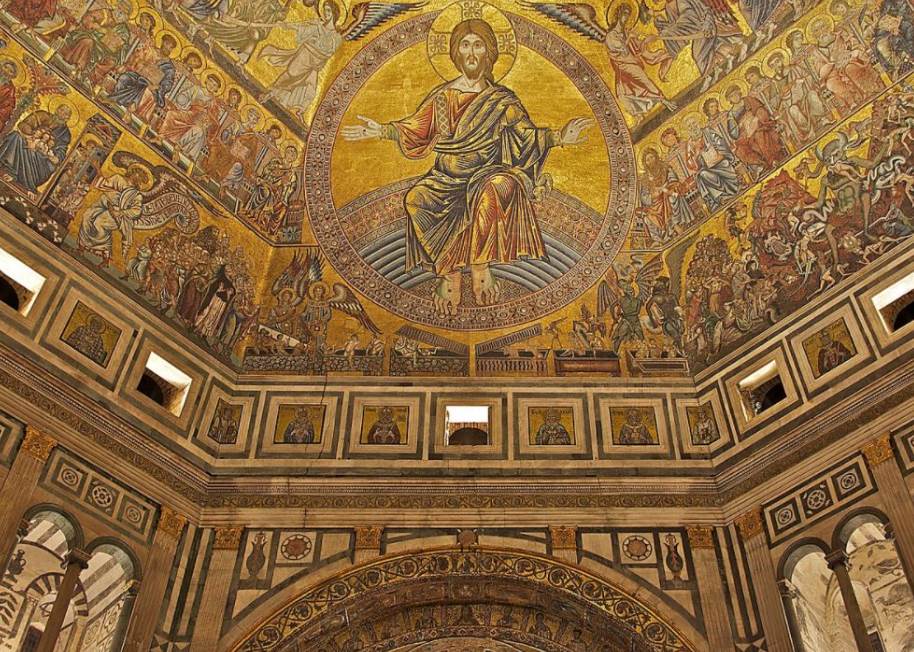The construction of this marvelous landmark in Florence started nearly 1,000 years ago, so it’s fair to conclude that this is one of the most iconic buildings in the city.
In this article, we’ll take a closer look at some of the most interesting facts about the Florence Baptistery, a fascinating structure with some remarkable stories to tell!
1. It’s located right across the most iconic building in Florence
The Florence Baptistery is one of the best-recognized structures in the city. It has the status of a minor basilica and is located on both the Piazza del Duomo and the Piazza San Giovanni.
This octagonal building is also known as the “Baptistery of Saint John,” or “Battistero di San Giovanni” in Italian, and stands right across from the most famous building in the city, Florence Cathedral.
The other famous structure nearby is Giotto’s Campanile, a free-standing bell tower that is considered to be part of the cathedral complex.

2. It’s one of the oldest standing buildings in the city
One of the most astounding facts about the Florence Baptistery is that it was built between 1059 and 1128. This means that the construction of this iconic religious monument started nearly 1,000 years (yes, millennia) ago.
This in turn makes it one of the oldest standing buildings in the city. The current building was preceded by at least 2 older octagonal baptisteries, including one built in the 6th century by Theodolinda, Queen of the Lombards (570–628).
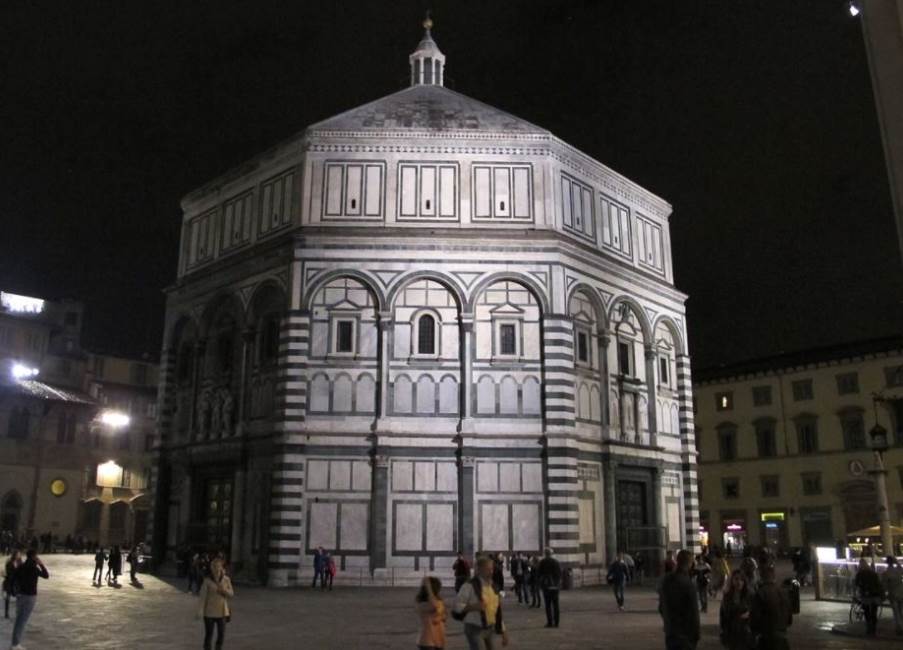
3. It was once confused with an ancient Roman temple
Perhaps even more astounding is that these baptisteries were preceded by even older structures, including a Roman wall that was built in the 1st century and a Roman house dating back to the 2nd century.
The first octagonal baptistery was built on top of the remains of an ancient Roman guard tower. Some of the remains of both this house and the guard tower, which was part of the Roman wall, are on display at the National Archaeological Museum of Florence.
Because of the extended history of buildings on this site, the current structure was once confused with an ancient Roman temple dedicated to Mars. This erroneous story was mentioned in Villani’s 14th-century Nuova Cronica.
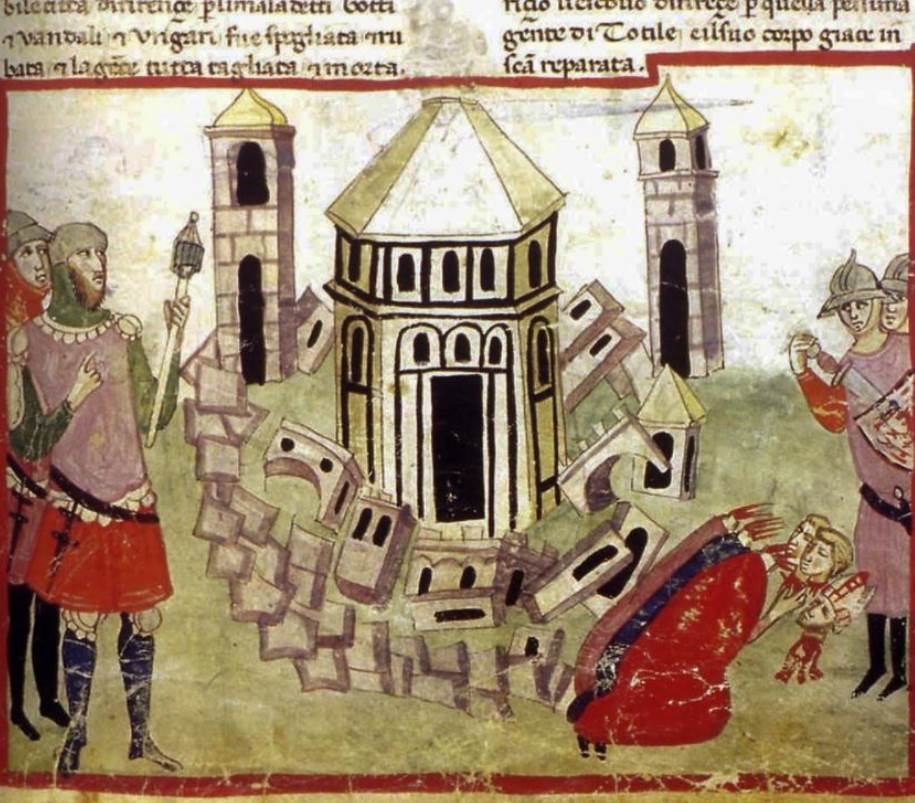
4. Its octagonal design was based on that of a 5th-century structure
The remarkable octagonal design of the building was a pretty common shape in early Christianity. One of the earliest examples of this type of building was the Lateran Baptistery, an ancient adjoining structure to the marvelous Archbasilica of Saint John Lateran in Rome.
This baptistery was the only of its kind in Rome for a long time after its completion in 440 A.D. Its revolutionary design was copied all across Italy, including in the initial baptisteries built in Florence.
The Baptistery in Florence does have an addition on the west side which was made rectangular in the year 1202.
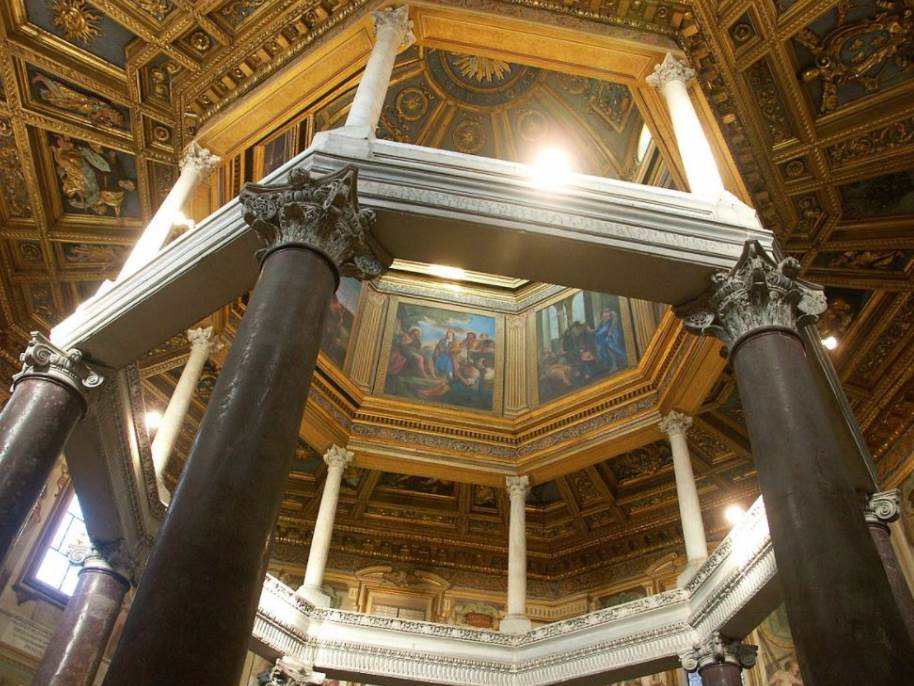
5. It became an influential building itself the following centuries
The Florence Baptistery was designed in the typical Florentine Romanesque architectural style and was distinctively clad with white marble. This marble probably came from a nearby quarry in Fiesole, but it’s also assumed that marble from ancient structures was used.
Even though this architectural style didn’t spread across Italy, let alone across Europe, it laid the foundation for influential Renaissance artists such as Francesco Talenti, Leon Battista Alberti, and Filippo Brunelleschi.
The major work of the latter stands just nearby, Florence Cathedral, with its magnificent dome. In that sense, the Baptistery can be described as one of the most influential landmarks in Florence!
6. It took the artist 21 years to complete the bronze doors
One of the most features of the Baptistery is the 3 sets of bronze doors. The south doors are the oldest and were created in the 14th century by Andrea Pisano (1290-1348). This work was completed between 1329 and 1336.
A competition was launched in the year 1401 for the commission of the north doors. The two finalists were Lorenzo Ghiberti and Filippo Brunelleschi and they remarkably both won the commission.
Unable to accept this, Filippo left for Rome where studied ancient structures such as the Pantheon, something that inspired him to complete the dome of Florence Cathedral.
This means that for the next 21 years, Ghiberti worked alone and completed these magnificent bronze doors that consist of 28 panels and which were installed on the northern side of the Baptistery.
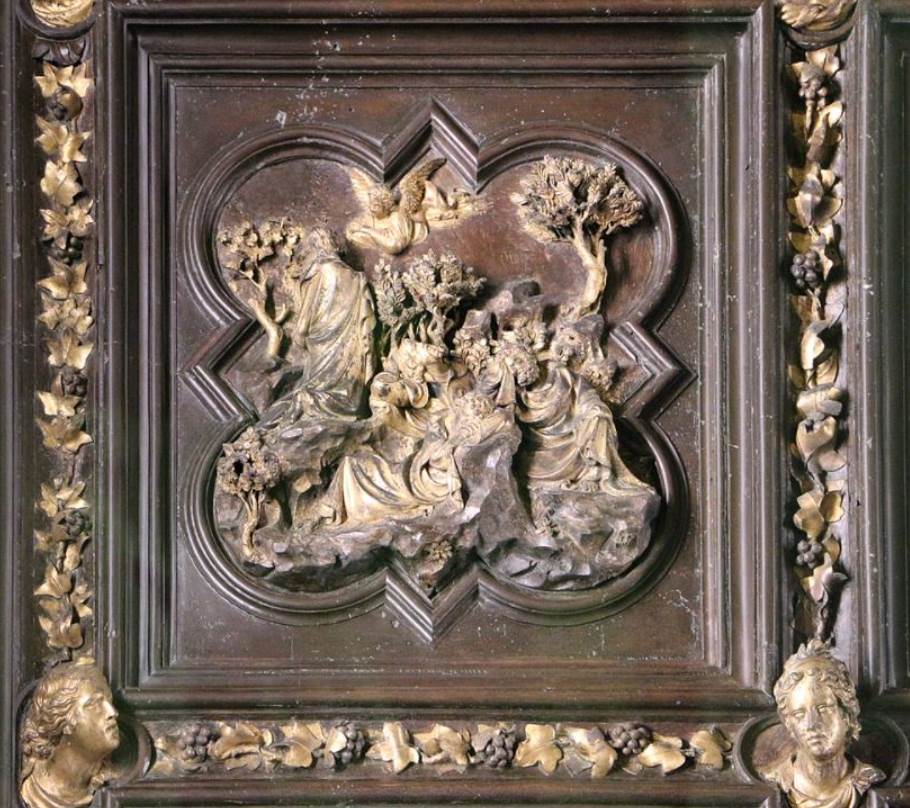
7. One set of doors were referred to as “The Gates of Paradise”
Because his work was so appreciated in and around Florence, Ghiberti earned the commission for the east doors in 1424 as well. This time, he and his workshop spent 27 years working on this magnificent work of art.
These doors were admired by some of the greatest artists in history, including Michelangelo who referred to them as the “Gates of Paradise” or “Porte del Paradiso.” They are still sometimes referred to as such today.
8. The original doors of the Baptistery are located in a nearby museum
From their installation in the 14th and 15th centuries until the late 20th century, these bronze doors were installed on the northern southern and eastern sides of the Baptistery.
They were removed in the year 1990 and placed in a protective environment at the Museo dell’Opera del Duomo just nearby. Some of the original panels can be admired here, the ones not only display are being restored using laser technology.
This also means that the doors present in the Baptistery today are exact replicas of the original ones.

9. Copies of the doors can be found all around the world
The replicas found decorating the Baptistery today aren’t the only copies in the world. Copies of the Gates of Paradise and their ten panels depicting stories from the Old Testament can be found all across the world. Some of the most notable locations where copies can be found are:
- Vassar College in Poughkeepsie, New York, United States.
- Grace Cathedral in San Francisco, California, United States.
- Kazan Cathedral in Saint Petersburg, Russia.
- Nelson-Atkins Museum of Art in Kansas City, Missouri, United States.
- Harris Museum, Art Gallery & Library, Preston, United Kingdom.
10. Ghiberti is featured on a sculptural relief on the Gates of Paradise
Ghiberti used a newly discovered method of perspective to give depth to the reliefs of the east doors. This turned the doors into one of the most revolutionary works of art ever created at the time.
Apart from the 10 panels that depict multiple stories from the Old Testament, he also integrated a large number of little statues and a total of 24 busts.
2 of these busts in the central part of the door depict both the artist himself and his father, Bartolomeo Ghiberti. This way he is eternally included in his ultimate masterpiece!
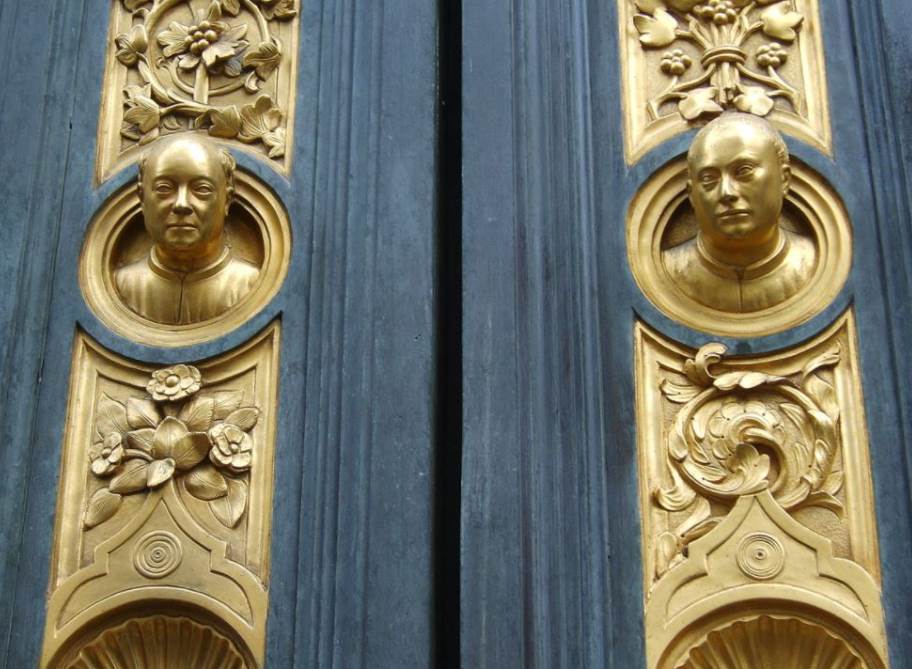
11. The dark interior of the building features a monumental tomb
So how does the Florence Baptistery look on the inside?
Well, the interior of the building is rather gloomy and dark, a sheer contrast to the white marble it’s clad with on the outside. The lower part is decorated with 11th-century columns and pilasters, and the upper part features a walkway.
One of the most notable monuments inside the building is the tomb of Antipope John XXIII, a joint work by Renaissance artists Michelozzo Michelozzi and Donatello.

12. It took over a century to complete the marvelous mosaic ceiling
You’ll forget the dark and grim interior of the Florence Baptistery in the blink of an eye when you take a peek at the ceiling of this fascinating structure. Here you can see an incredible mosaic ceiling that decorates the interior dome of the building.
The oldest part of these mosaics is located in the upper section and dates back to the year 1225. The heads inside the drum of the dome depict various prophets and were added around 1330.
This means that it took over a century to decorate the entire ceiling with mosaics!
